1. Hyperventilation
2. Respiratory System
2.1. Dyspnea
2.2. Apnea
2.3. Breathholding
2.4. Shallow breathing
3. Circulatory System
3.1. Blood pressure
3.2. Heart Rate; HRV; RSA
3.3. Vasoconstriction
3.4. Vascular inflammation
4. Renal System
4.1. decrease frequent urination
4.2. decreaseincontinence
4.3. decrease bedwetting
5. Integumentary/Exocrine System
5.1. reduce skin sensitivities
5.2. reduce chronic itching
5.3. reduce chronic pain
5.4. reduce aversive sensations
5.5. reduce inflammation
5.6. reduce symptoms fibromyalgia
5.7. reduce acne
5.8. reduce allergy response
5.9. improve sweating
6. memories
7. Psychotic processes, amelioration of:
7.1. visual hallucinations
7.2. auditory hallucinations
8. reduced ARFID symptoms (avoidant restrictive food intake d/o
9. reduced gastric reflux GERD
10. Memory
10.1. improved working memory
10.2. improved episodic memory
10.3. improved autobiographical memory
11. Mania: amelioration of:
11.1. agitation
11.2. racing thoughts
11.3. distractible/tangential
12. Skeletal System
12.1. Tooth sensitivity
13. Nervous System
13.1. Central Nervous System
13.1.1. Cortex-see psychological system
13.1.2. Brainstem-to be completed
13.1.3. Spinal cord
13.1.3.1. reflexes
13.2. Peripheral Nervous System
13.2.1. Sensory Branch
13.2.1.1. Sensation: crawling on the skin
13.2.1.2. Sensitivity to clothing
13.2.1.3. Feeling of tightness of skin
13.2.1.4. Itching
13.2.1.5. Post-herpetic neuralgia
13.2.1.6. Point sensitivity (fibromyalgia)
13.2.2. Motor Branch
13.2.2.1. Somatic
13.2.2.2. Autonomic
13.2.2.2.1. I
13.2.2.2.2. Sympathetic
13.2.2.2.3. Parasympathetic
13.2.2.3. Cranial nerves
13.2.2.3.1. II
13.2.2.3.2. III Oculormotor
13.2.2.3.3. IV
13.2.2.3.4. V
13.2.2.3.5. VI
13.2.2.3.6. VII Accessory
13.2.2.3.7. Improved esophogeal spasms
13.2.2.3.8. VII Vestibular
13.2.2.3.9. IX
13.2.2.3.10. X Vagus
13.2.2.3.11. XI
13.2.2.3.12. XII
14. Psychological System
14.1. Anxiety
14.1.1. decreased fears and phobias
14.1.2. decreased ruminative thought
14.1.3. decreased obsessions
14.1.4. decreased compulsions
14.1.5. decreased restlessness
14.1.6. decreased reactive movements
14.1.6.1. spinning
14.1.6.2. flapping
14.1.6.3. picking
14.1.6.4. rocking
14.1.6.5. fidgeting
14.1.6.6. distorted self sense
14.2. Trauma
14.2.1. decreased flashbacks
14.2.2. decreased nightmares
14.2.3. decreased avoidance
14.2.4. decreased triggers
14.2.5. decreased disorganization
14.2.6. decreased hpervigilance
14.2.7. improved sleep
14.2.8. decreased dissociation/integration
14.2.9. decreased defensive exculsion
14.2.10. decreased numbing
14.2.11. decreased blocking
14.3. decreased structural splitting
14.4. decreased self injury
14.5. Reactive aggression
14.5.1. decreased bullying
14.5.2. decreased peer conflict
14.5.3. decreased physical attacks
14.5.3.1. kicking
14.5.3.2. hitting
14.5.3.3. biting
14.5.3.4. throwing objects
14.5.3.5. destruction of property
14.6. Self injury
14.7. Judgement and reasoning
14.7.1. improved processing speed
14.7.2. improved attention
14.7.3. improved orientation of attention
14.7.4. improved language ability
14.7.5. improved auditory procesing
14.7.6. improved vocabulary
14.7.7. improved following directions
14.8. Behavioral Reactivity
14.8.1. improved emotion regulation
14.8.2. improved cravings
14.8.3. decreased hyperactivity
14.8.4. increased frustration tolerance
14.8.5. increased stress tolerance
14.8.6. decreased mood lability
14.8.7. decreased meltdowns
14.8.8. decreased sensory sensitivity
14.8.8.1. misophonia
14.8.8.2. hyperacusis
14.8.8.3. oral textural sensitivity
14.8.8.4. flavor avoidance
14.8.8.5. light sensitivity
14.8.8.6. light sneeze reflex
14.8.8.7. skin/touch aversion
14.8.8.8. olfactory distortions
14.8.9. decreased tics
14.8.10. decreased running away
14.9. Depression: amelioration of:
14.9.1. Untitled
14.9.2. anhedonia
14.9.3. helplessness
14.9.4. irritability
14.9.5. psychomotor slowing
14.9.6. negative/ruminative thinking
14.9.7. poverty of speech
14.9.8. alexithymia
14.9.9. flat expression
14.9.10. sleep disruption
14.9.11. apnea
14.10. Executive functioning improvements
14.10.1. planning
14.10.2. prioritizing/sequencing
14.10.3. rigid rule-bound thinking
14.10.4. impulsivity
14.10.5. problem solving
14.10.6. school performance
14.10.7. self-awareness/metacognition
14.10.8. on task
14.10.9. organization
14.10.9.1. thoughts
14.10.9.2. materials
14.10.10. dexterity
14.10.11. processing speed
14.10.12. reciprocal communication
14.10.13. abstract language
14.10.14. pragmatics
14.10.15. time management
14.10.16. problem solving
14.10.17. classroom participation
14.10.18. tolerance for busy environments
14.10.19. sense of humor!!
14.11. thoughts and behavior have more purposeful flow
14.12. seeking affection
14.13. Improved Social Engagement
14.13.1. reciprocal behavior
14.13.2. seeking affection
14.13.3. empathy
14.13.4. openness (accessibility)
14.13.5. seeking playmates
